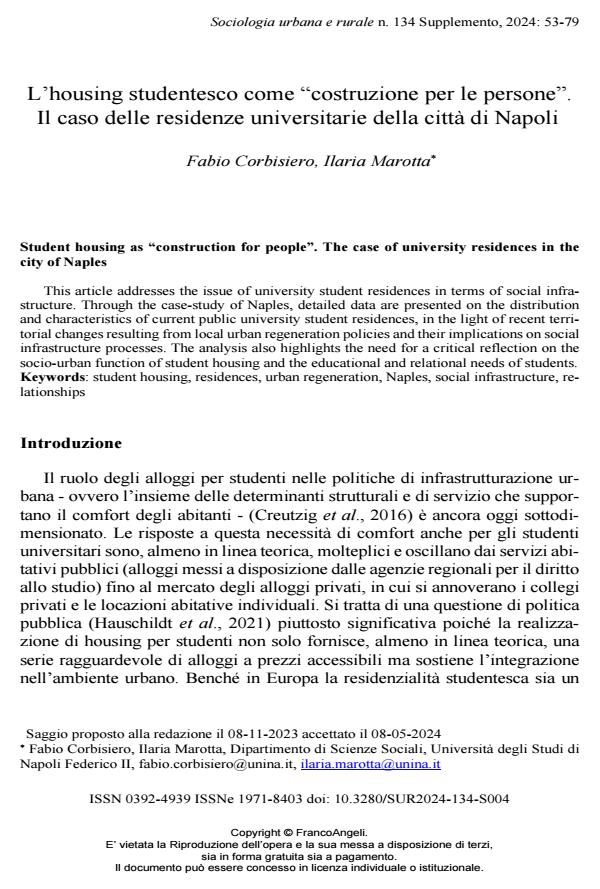L’housing studentesco come “costruzione per le persone”. Il caso delle residenze universitarie della città di Napoli
Titolo Rivista SOCIOLOGIA URBANA E RURALE
Autori/Curatori Fabio Corbisiero, Ilaria Marotta
Anno di pubblicazione 2024 Fascicolo 2024/134 Suppl.
Lingua Italiano Numero pagine 27 P. 53-79 Dimensione file 605 KB
DOI 10.3280/SUR2024-134-S004
Il DOI è il codice a barre della proprietà intellettuale: per saperne di più
clicca qui
Qui sotto puoi vedere in anteprima la prima pagina di questo articolo.
Se questo articolo ti interessa, lo puoi acquistare (e scaricare in formato pdf) seguendo le facili indicazioni per acquistare il download credit. Acquista Download Credits per scaricare questo Articolo in formato PDF

FrancoAngeli è membro della Publishers International Linking Association, Inc (PILA)associazione indipendente e non profit per facilitare (attraverso i servizi tecnologici implementati da CrossRef.org) l’accesso degli studiosi ai contenuti digitali nelle pubblicazioni professionali e scientifiche
This article addresses the issue of university student residences in terms of social infra-structure. Through the case-study of Naples, detailed data are presented on the distribution and characteristics of current public university student residences, in the light of recent territorial changes resulting from local urban regeneration policies and their implications on social infrastructure processes. The analysis also highlights the need for a critical reflection on the socio-urban function of student housing and the educational and relational needs of students. student housing, residences, urban regeneration, Naples, social infrastructure, relationships
Parole chiave:student housing, residenze, rigenerazione urbana, Napoli, infra-struttura sociale, relazioni
Fabio Corbisiero, Ilaria Marotta, L’housing studentesco come “costruzione per le persone”. Il caso delle residenze universitarie della città di Napoli in "SOCIOLOGIA URBANA E RURALE" 134 Suppl./2024, pp 53-79, DOI: 10.3280/SUR2024-134-S004